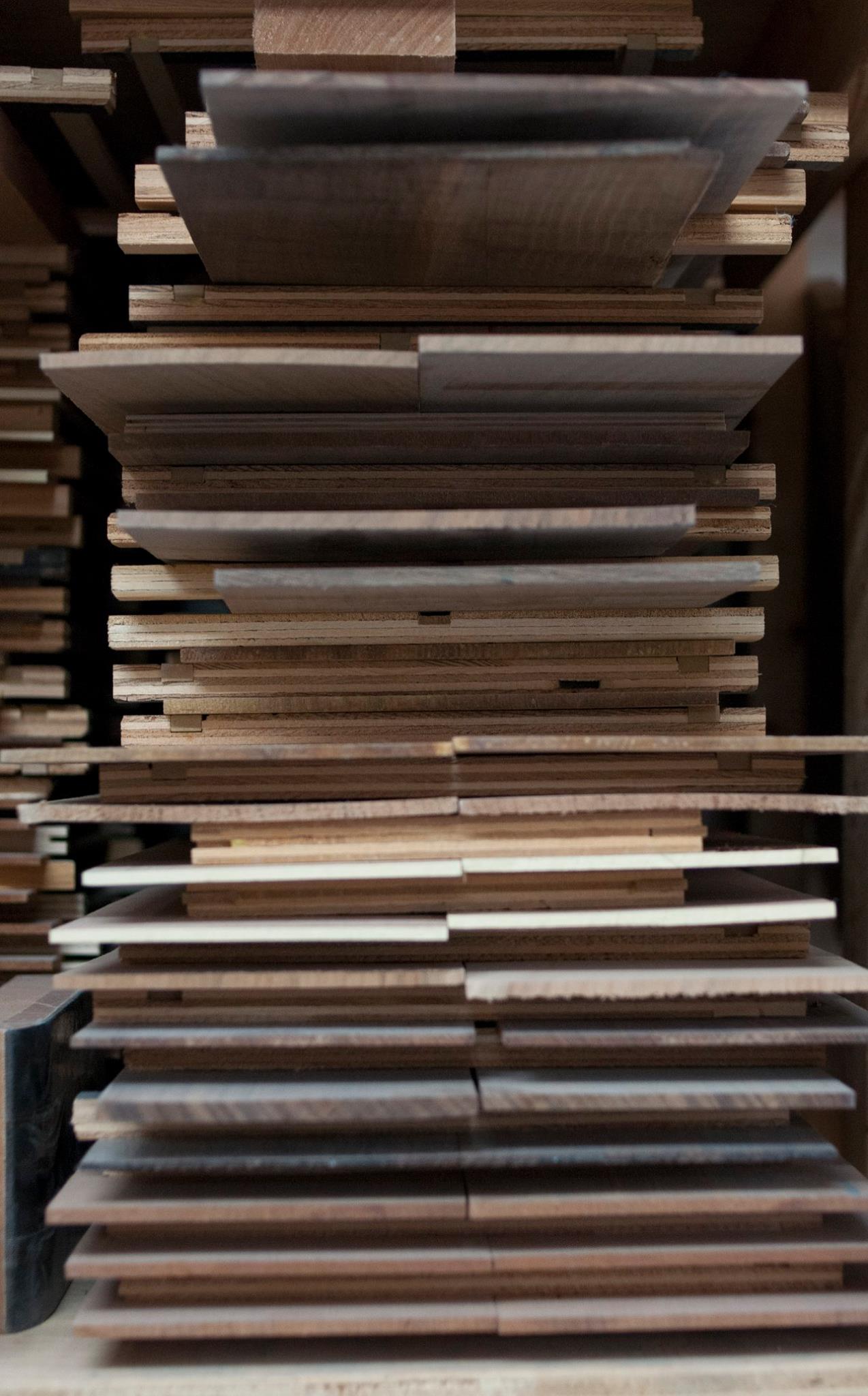Introduction
In guitar making, the importance of the choice of materials is paramount. Wood, a living material which represents 95% of the material present on an acoustic guitar, must be carefully selected by the luthier.
As much for the acoustic aspect as for the mechanical stability of the instrument, the wood used must fulfill certain criteria.
Before being stabilized and usable, a piece of wood must dry between two to three years at controlled humidity, after that, the luthier can begin to work it. It is thanks to this process that a custom acoustic guitar guarantees stability and durability.
Unfortunately, this is not always the case in the industry for the sake of efficiency. Often on the instruments of major brands, there are problems related to poor selection or poor drying of the wood used. This usually results in deformations of parts that can lead to expensive repairs or even make the instrument unusable.
The stock of wood of a luthier must therefore have enough inventory to be able to rotate. In order to be able to offer different types of wood to its clientele, it is important to always have wood ready to be used while others will continue to dry.
Wood Characteristics for Acoustic Guitars.
– The different types of wood
In guitar making, wood is our main subject. Lively, natural and therefore imperfect, it is a subject that can be capricious and difficult to master.
It is therefore important to understand the constitution of each wood species in order to understand how to work with it.
We are constantly working on the weight / stiffness ratio of a piece of wood. This is one of the main ingredients that allows us to shape the acoustic identity of a guitar.
An acoustic guitar works like a speaker, with a membrane (the soundboard) and a box (the rest of the body). The top, in order to be able to transmit the vibrations, will have to be constituted generally of a light essence but which resists the tension of the strings. This is why spruce and cedar are very often used for this element.
For the back and the sides, we will favor a denser essence to act as a structure projecting the sound. Here, mahogany, rosewood and other related species will be used.
The wood for the neck and the soundboard of the guitar.
As mentioned above, each wood species has its own characteristics and could be used for special purposes. For example, for a guitar with a warm tone, we’ll prefer a cedar top but for a guitar with a lot of dynamics and harmonics a spruce top with a rosewood back and sides would be a good option.
It’s all about combination, quality, and quantity. Exactly like a cooking recipe.
For the neck as for the fretboard, the stability is paramount, the frets being adjusted to the tenth of a millimeter it is important that the wood used here is endowed with beautiful characteristics.
It must be cut on quarter (the grain perpendicular to the faces of the piece of wood) and as homogeneous as possible (no knots etc …)





Leave A Comment